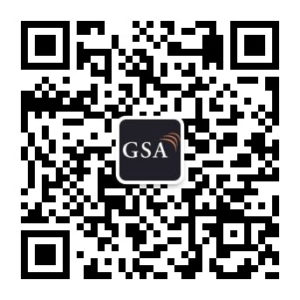Low-Band Update January 2022: Executive Summary
INTRODUCTION
This report provides a snapshot of the global status of national usage of spectrum below 1.6 GHz (low-band spectrum) for LTE and 5G services. It is part of a series of reports which separately also cover spectrum from 1.6 to 7.125 GHz (mid-band spectrum) and spectrum above 24 GHz (high-band spectrum).
Low-band spectrum is very important for expanding network coverage in all urban/suburban/rural deployment scenarios, ensuring service continuity across different geographies, enhancing service quality in indoor environments and helping to close the digital divide. Mobile operators are demanding low-band spectrum, and some specific bands like 410–430 MHz, 450 MHz or GSM-R 900 MHz also play an important role in specific industries for the creation of private networks. For these reasons, GSA foresees an increase in the number of auctions of low-band spectrum in the coming years, as well as 5G NR deployments using already assigned spectrum licences.
This report reflects a market that is in constant evolution and feedback is greatly appreciated to keep it current. Please send comments and information to research@gsacom.com.
Key statistics:
>500 operators hold licences enabling launch of public LTE or 5G networks using low-band spectrum.
Nearly 400 operators are known to have launched public LTE or 5G networks using low-band spectrum.
16,280 LTE devices support one or more bands in the low-band frequency range.
GSA has identified 652 announced 5G devices that support low-band spectrum bands for NR, 497 of which are already commercially available. Year-on year-growth in announced models exceeds 200% for all of the most-supported bands.
thirty-two countries/territories have announced formal plans for assigning 5G-suitable low-band frequencies between now and 2023 (including technology-neutral licences or licences for mobile broadband services).
24 of those are planning to auction/assign spectrum at 700 MHz.
Use of low-band spectrum for LTE and 5G
Several key low-band spectrum bands are used for LTE and 5G.
Many similar spectrum ranges – particularly those around 800, 850 and 900 MHz are also used for networks based on 2G or 3G technologies (but those are not analysed in this report unless regulators have begun refarming the spectrum for use by LTE and 5G networks).
Deployment details for the various bands are:
450 MHz (Band 31): GSA has identified 14 operators as investing in LTE at 450 MHz. At least 10 of them have launched LTE in this band.
600 MHz (Band 71): 37 operators are identified as investing in spectrum at 600 MHz, at least three of which have launched both LTE and 5G services in the range and another three have launched 5G. Spectrum has been awarded in Canada and the USA (plus territories). India, Mexico, Myanmar, and Saudi Arabia have plans for assignment of spectrum at 600 MHz.
700 MHz: 205 operators investing in LTE across the key 700 MHz bands:
165 operators have been identified as investing in APT 700 MHz spectrum (Band 28 and Band n28: 703–748 MHz/758–803 FDD), including 153 with licences, of which 74 have launched commercial LTE or 5G services in the band. Of those, 59 operators have launched LTE and 20 have launched 5G networks using this spectrum range.
GSA has also identified 98* operators investing in LTE in one of the American 700 MHz bands (Bands 12, 13 ,14 or 17, between them covering 75 MHz within 699 MHz and 798 MHz). Of those, 77* have used one of the bands to launch their LTE network. GSA has not identified any 5G launches in Bands n12, n13, n14, or n17, although one operator is understood to be planning a 5G network and another operator is currently deploying a 5G network in this band.
Band 20: (832–862 MHz/791–821 MHz) is the most-used individual band, with 228 operators investing in LTE using this frequency range, including 202 that are understood to have launched networks, 4 that are deploying networks, 22 other licensed operators and one more planning a network. No operators have been recorded with 5G networks using Band n20, although one has been engaged in 5G trials in that band.
Low-Band Update January 2022: Executive Summary
WeChat: GSA Express


© GSA 2021
